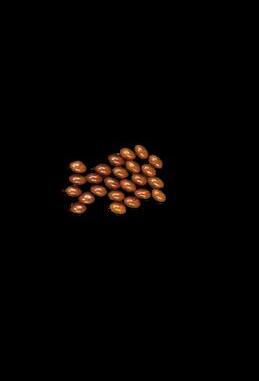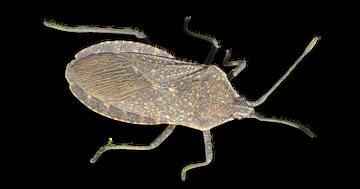SQUASHBUG
Identification Monitoring
Scoutcucurbitplants1×week; lookforadultsattheplant baseandeggclustersonthe undersidesoffoliage Overwinteredadultswill appearearlyintheseason
Identifyadultandnymph feeding(piercing-sucking mouthparts)onleaves,vines, andfruit Highpopulationscan causeplantwilting.
Management
Sanitation:Minimizeoverwinteringadult populationsbyremovingortillingcucurbitdebris, includingvinesandfruits,afterharvest Clear woodpiles,plasticmulch,andothergroundcover nearfieldswhereinsectsmayseekwintershelter.
Resistance:Planttolerantcucurbitspecies,such asbutternutand'RoyalAcorn';moderately resistantvarietiesinclude'SweetCheese'and 'GreenStripedCushaw' 'PinkBanana'squashand 'BlackBeauty'zucchiniaremoderately susceptible,whileyellowsquash,'Hubbard',and pumpkinsarehighlysusceptible.
Hand removal: Regularly pick adults and nymphs, and remove egg clusters to reduce populations Eggs can be cut out, stuck to duct tape, or smothered with oil or petroleum jelly. Early, frequent removal is most effective
AdditionalManagement
CropRotation:Rotatetonon-cucurbit cropsinalternatingyearstoreducethe numberofimmigratingadultsquashbugs Croprotationwillbemosteffectivein largerfields.
PlantingTiming:Peakegg-layingoccursin lateMayinnorthernUtahandlateAprilto earlyMayinsouthernUtah.Plantingor transplantingbeforeorafterthesewindows canreduceinjury.
Trapping:Duringtheseason,placewooden boards,shingles,orcardboardnearhost plantstotrapsquashbugsseekingshelter Intheearlymorning,flipthetrapsand destroyanybugsfoundunderneath
TrapCrops:SpecieslikeblueHubbardsquash attractadultsquashbugsandshouldbe plantedtwoweeksbeforethemaincrop, placedeveryfewrowsoratrowends.Apply insecticideorremovethetrapcropbefore eggshatchtoprotectthemainplanting.
Natural Enemies: The most common natural enemies of squash bugs are parasitoids. These include a tachinid fly, Trichopoda pennipes, whose larvae feed on older nymphs and adults and several wasps that parasitize eggs in the family Encyrtidae and Scelionidae.
Pesticides: Apply after egg hatch and before canopies form to ensure good coverage, especially on leaf undersides. Spray in early morning or evening to improve effectiveness and protect pollinators. Use high pressure, rotate chemical classes to prevent resistance, and check labels for squash bug and crop use.





